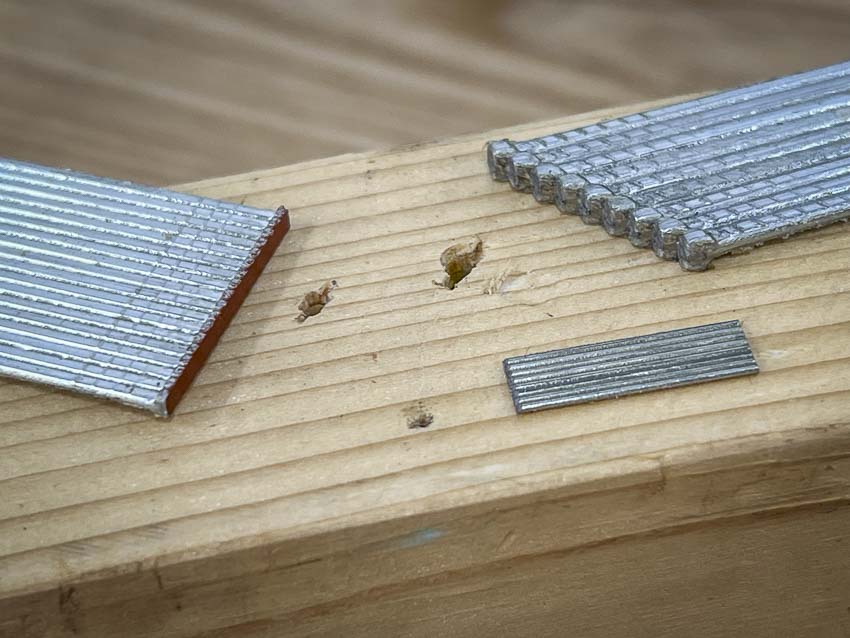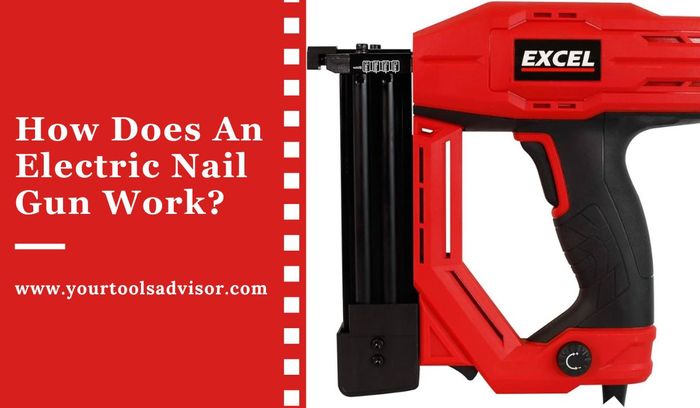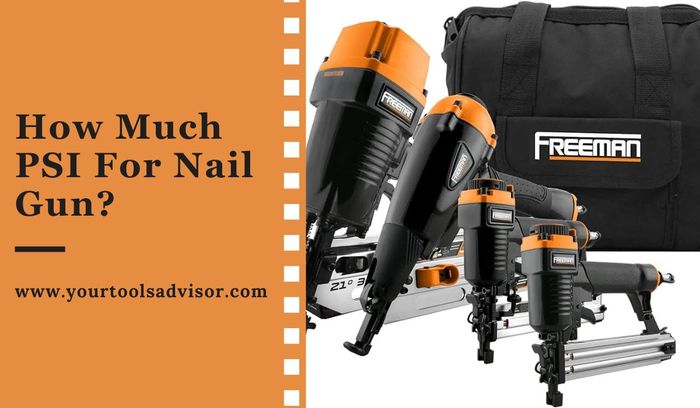A finish nailer is used for larger, more robust applications, while a brad nailer is designed for delicate and smaller tasks. In detail, a finish nailer fires larger gauge nails, typically 15- or 16-gauge, with a thicker diameter and larger head.
This makes it suitable for attaching crown molding, baseboards, and trim. On the other hand, a brad nailer utilizes smaller gauge nails, usually 18-gauge, which means they have a narrower diameter and smaller head. Due to their smaller size, brad nailers are ideal for securing thin trim, molding, and other delicate pieces without splitting the wood.
While both nailers have their distinct uses, a finish nailer is better suited for heavy-duty projects, while a brad nailer is more suitable for intricate and fragile work.
Overview Of Finish Nailer And Brad Nailer
Overview of Finish Nailer and Brad Nailer: Finish nailer and brad nailer are both popular power tools used in woodworking and construction projects. They are both pneumatic tools operated by compressed air, but they have distinct differences that make them suitable for different applications. Differences between Finish Nailer and Brad Nailer:
- A finish nailer is designed for heavy-duty tasks, such as installing baseboards, crown molding, and door casings. It uses thicker nails with a larger gauge, typically ranging from 15 to 16 gauge. On the other hand, a brad nailer is used for light trim work and delicate materials, like attaching trims, thin moldings, and paneling. It uses smaller nails with a finer gauge, usually 18 gauge.
- When it comes to nail size, finish nailers can handle nails ranging from 1.25 to 2.5 inches in length, whereas brad nailers can accommodate nails between 0.75 and 2 inches long. The larger nails used by finish nailers offer greater holding power, making them ideal for structural applications.
- The appropriate use of each nailer is determined by the material being fastened. Finish nailers are preferred for hardwoods and thicker materials, where a stronger hold is required. Brad nailers are perfect for softer woods and delicate materials, helping to prevent splitting or damage.
- Moreover, finish nailers create larger holes due to their thicker nails, while brad nailers leave smaller holes, which can be easily concealed with putty or touch-up paint.
- Additionally, due to the larger and thicker nails used, finish nailers are heavier and more powerful compared to brad nailers. This also means that finish nailers require a higher air pressure setting to operate effectively.

Credit: m.youtube.com
Characteristics Of Finish Nailer
Finish nailers and brad nailers differ in their characteristics. Finish nailers are designed for heavier and more durable woodworking projects, while brad nailers are better suited for delicate trim work and light-duty applications.
Difference between Finish Nailer And Brad NailerCharacteristics of Finish Nailer:
| Nail size compatibility | Finish nailers are capable of accepting a wide range of nail sizes, typically ranging from 15 to 16-gauge nails. This makes them suitable for various woodworking projects that require a stronger and more secure hold. |
| Nail angle and magazine capacity | Finish nailers usually have a slightly angled magazine that allows for better access and positioning in tight corners. They also come with larger magazine capacities, allowing you to load more nails and work for longer periods without frequent reloading. |
| Suitable applications | Finish nailers are commonly used for interior and exterior trim work, baseboards, crown moldings, door and window casings, as well as cabinetry installation. Their ability to provide a clean and professional finish makes them a popular choice among carpenters and DIY enthusiasts. |
Characteristics Of Brad Nailer
A Brad Nailer is a type of nail gun that is designed for smaller, delicate woodworking projects. It uses 18-gauge nails that are 5/8″ to 2″ in length. The nail angle of a Brad Nailer is generally straight, 0-degree, which means the nails are driven perpendicular to the workpiece.
A Brad Nailer typically has a smaller magazine capacity compared to a Finish Nailer, accommodating around 100 nails at a time. It is suitable for applications that require a more precise and delicate finish, such as trim work, crown molding, and cabinet installation.
In comparison, a Finish Nailer is designed for heavier construction tasks and uses 15- or 16-gauge nails that are 1-1/4″ to 2-1/2″ in length. It has a larger magazine capacity, typically holding about 100 to 120 nails.
A Finish Nailer has a angled magazine with different degrees of nail angle options, such as 15 degrees or 16 degrees. This allows for better accessibility in tight spaces and better nail placement.
Finish Nailers are commonly used for framing, decking, and other heavy-duty projects where strength and durability are important. They provide a stronger hold and have a more significant impact due to their larger size and angled nails.
Comparison Between Finish Nailer And Brad Nailer
Comparison between Finish Nailer and Brad Nailer:The difference between a finish nailer and a brad nailer lies in their power and driving force, nail head size and holding power, as well as depth adjustment and precision.
Power and driving force:
A finish nailer is typically more powerful than a brad nailer. It is designed to handle larger nails and drive them into harder materials, such as hardwoods. On the other hand, a brad nailer is lighter and smaller, making it ideal for more delicate tasks and softer woods.
Nail head size and holding power:
Finish nailers use larger nails with a bigger head diameter, providing increased holding power and stability. Brad nailers, on the other hand, use smaller nails with a smaller head, which means they leave smaller holes and have less holding power. This makes them suitable for projects where hiding the nail heads is important.
Depth adjustment and precision:
Finish nailers usually have depth adjustment features that allow you to control how deep the nail is driven into the material. This provides more precision and flexibility when working on different projects. Brad nailers, however, typically do not have depth adjustment, which means they are less versatile in terms of nail placement and depth control.
Factors To Consider When Choosing
Project requirements and materials: One important factor to consider when choosing between a finish nailer and a brad nailer is the specific requirements of your project and the materials you will be working with. If you are working on a project that involves trim work or molding, a finish nailer may be better suited as it can handle larger nails and provide a stronger hold. On the other hand, if you are working with delicate materials such as thin veneers or decorative trim, a brad nailer with smaller nails would be more appropriate to prevent splitting or damage.
Nail size and length: Another factor to consider is the nail size and length required for your project. Finish nailers typically use larger nails with a higher gauge and length, ranging from 15 to 16 gauges and around 1 to 2.5 inches in length. Brad nailers, on the other hand, use smaller gauge nails, usually 18 gauges, and shorter lengths, generally under 2 inches.
Ease of use and maneuverability: Lastly, consider the ease of use and maneuverability of the nailer. Finish nailers are generally heavier and bulkier compared to brad nailers, which are lighter and more compact. If you anticipate using the nailer for extended periods or performing overhead work, a lighter and more maneuverable brad nailer might be preferable.
Common Applications And Projects
When it comes to differentiating between a finish nailer and a brad nailer, understanding their common applications and projects is crucial. A crown molding installation generally requires a finish nailer due to its ability to handle larger nails and provide stronger fastening. On the other hand, a brad nailer is better suited for more delicate tasks such as baseboard installation. The smaller gauge brads used by the brad nailer minimize the risk of splitting the wood. Moreover, when it comes to installing door and window trim, both nailers can be used depending on the specific project requirements. The finish nailer provides a stronger hold, while a brad nailer ensures a neater finish. It is important to choose the appropriate nailer based on the project at hand to achieve the desired results.
Pros And Cons Of Finish Nailer
- Provides a professional finish to woodworking projects
- Allows for precise placement of nails
- Offers a higher holding power compared to a brad nailer
- Suitable for thicker and heavier materials
- Works well on molding, baseboards, and trim
- Limited to larger nails, which may leave more noticeable holes
- Not ideal for delicate or thin materials as it may cause splitting
- Requires a larger tool size and can be heavier
- May require additional force to drive nails into harder materials
- Higher risk of damaging the workpiece if not handled properly
Pros And Cons Of Brad Nailer
A Brad Nailer is a type of nail gun used for precise and delicate woodworking tasks. It is known for its narrow gauge and smaller nail size. One of the key benefits of using a Brad Nailer is that it leaves smaller holes, which means less wood filler is required for touch-ups. This makes it ideal for finish work on cabinets, furniture, and trim. Another advantage is that it reduces the risk of splitting the wood due to its smaller nails. However, there are some limitations to consider when using a Brad Nailer. Due to the smaller nails, it may not provide enough holding power for certain projects, such as heavy-duty framing or structural work. Additionally, the smaller gauge nails may not be suitable for certain materials, such as hardwoods or high-density woods. Therefore, it’s important to choose the right tool based on the specific project requirements.
Selecting The Right Nailer For Your Projects
When choosing the right nailer for your projects, it is important to consider several factors:
- Nail Size: Both finish nailers and brad nailers are capable of driving nails, but they differ in the size of nails they can accommodate. Finish nailers are ideal for larger nails, while brad nailers are designed for smaller gauge nails.
- Application: Consider the type of project you will be working on. If you are working on delicate trim work or furniture, a brad nailer may be the best choice as they leave smaller holes and are less likely to damage the material. Finish nailers, on the other hand, are better suited for heavy-duty projects like framing.
- Strength: The power and strength of the nailer are important considerations. Finish nailers provide more driving power and are suitable for projects that require a strong bond. Brad nailers are better for lightweight tasks where excessive force might damage the material.
- Cost: Cost is another factor to consider. Brad nailers tend to be less expensive compared to finish nailers. If you have a limited budget, a brad nailer may be a more affordable option.
By carefully considering these factors, you can make an informed decision and select the right nailer for your projects.
Frequently Asked Questions For Difference Between Finish Nailer And Brad Nailer
What Is Better A Brad Nailer Or Finish Nailer?
A finish nailer is better for delicate and detailed work like trim and molding, while a brad nailer is ideal for lightweight materials and more delicate projects. Both have their strengths, so it depends on the specific task at hand.
Should I Use A Brad Nailer Or Finish Nailer For Baseboards?
Use a finish nailer for baseboards. It provides a stronger hold due to thicker nails and helps prevent splitting. A brad nailer is better for delicate trim work. Choose the right tool based on the project’s requirements for optimal results.
Can You Use A Brad Nailer For Finishing?
Yes, a brad nailer can be used for finishing. It is a versatile tool that can be used for trim work, crown molding, baseboards, and other types of finishing projects. The small gauge brad nails leave minimal holes and can be easily hidden for a clean and professional finish.
Can I Use A Brad Nailer For Baseboards?
Yes, a brad nailer can be used for baseboards. It is a handy tool for attaching baseboards securely to the wall. Just make sure to use appropriate length brad nails and adjust the nailer’s depth setting to avoid damaging the baseboards.
Remember to wear safety goggles and take caution while operating the nailer.
Conclusion
To sum up, the difference between a finish nailer and a brad nailer lies in their specific applications and the types of nails they use. While both tools are essential for woodwork and carpentry projects, the finish nailer provides a stronger hold for larger and heavier materials, while the brad nailer is ideal for delicate and precise work.
Choosing the right tool depends on the specific requirements of your project.





Leave a Reply